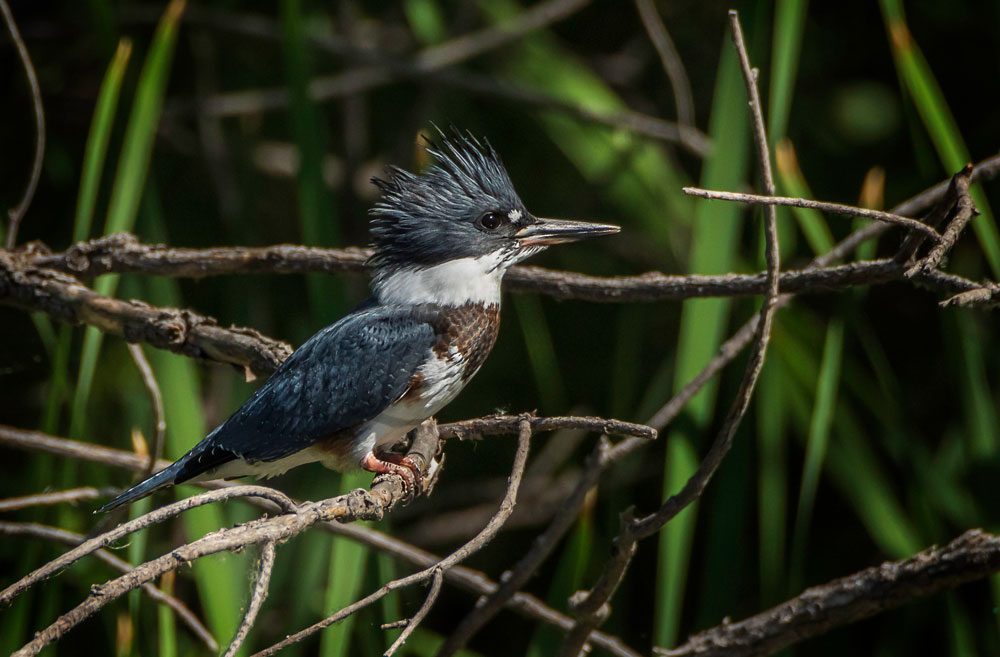Tes Jolly | Originally published in GameKeepers: Farming for Wildlife Magazine. To subscribe, click here.

Most aquatic managers and anglers have witnessed the bomber-like aerial displays of the belted kingfisher (ceryl alycon). Named for its preferences and proficiency for catching fish, the bird’s angling skills command respect and admiration, if not a little envy from human anglers.
The kingfisher is distinctive, sporting a huge bill and disproportionately large head with double-pointed crest that contrasts with its tiny legs and short tail. Appearing dressed in a tuxedo, its stacky body is a unique blue-gray, except for a white collar and belly, and gray chest band in both sexes. Known for its loud, scolding call, the harsh, vibrating, mechanical rattle given at the slightest disturbance reveals the bird’s fierce territorial nature. It’s a migratory bird, so it’s commonly sighted over many of the waterways throughout North America and southern Canada, including Alaska. It inhabits a variety of aquatic environments around lakes, tidal creeks, swamps, rivers, garden ponds and calm marine waters.
The kingfisher’s small size, fierce territorial nature and diet of mainly small forage fish in shallow water limit its impact on fish populations and minimizes susceptibility to environmental contaminants.
Did You Know the Belted Kingfisher…
1. ...has a sturdy large beak and head that form a deadly spearhead, well built to absorb the shocks of frequent high aerial plunges? When hunting, it may hover at heights up to 50 feet, then plunge into a dramatic, vertical headfirst dive, disappearing under water. The bird stops its dive by opening its wings and captures a fish in its bill, then launches from the water and flies to a nearby perch where the fish is tossed in the air and swallowed.
2. ...disgorges indigestible parts of prey such as fish bones and scales in pellet form which may accumulate under favorite perches? Other prey includes crustaceans, insects, small birds, lizards, salamanders and mice.
3. ...is mostly solitary except during breeding season? A pair primarily chooses a nest site near the top of a vertical bank and uses their beaks and spade-like feet to tunnel three to six feet to form a nest chamber.
4. ...shares incubation duty between both parents over six or seven glossy, white eggs for 23 to 24 days? Chicks hatch blind and naked. As sheathed feathers grow, they resemble tiny porcupines until about day 17 or 18 when the sheaths split and expose full-grown feathers.
5. ...is known for its dressy, blue-gray body, white collar and belly giving it a tuxedo look? Unlike most birds, the female kingfisher is actually “flashier-feathered” than the male, with a deep, chestnut-colored belly band.





























